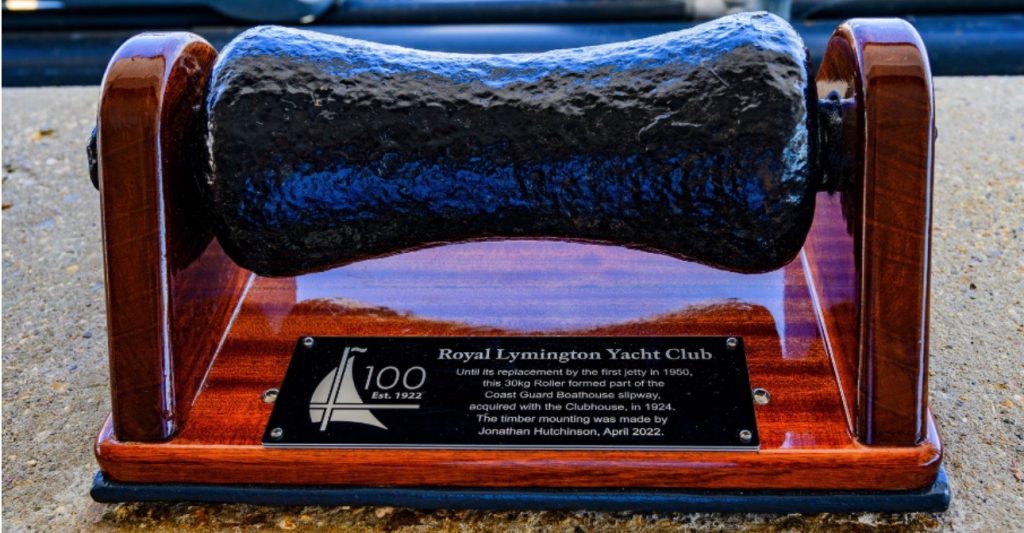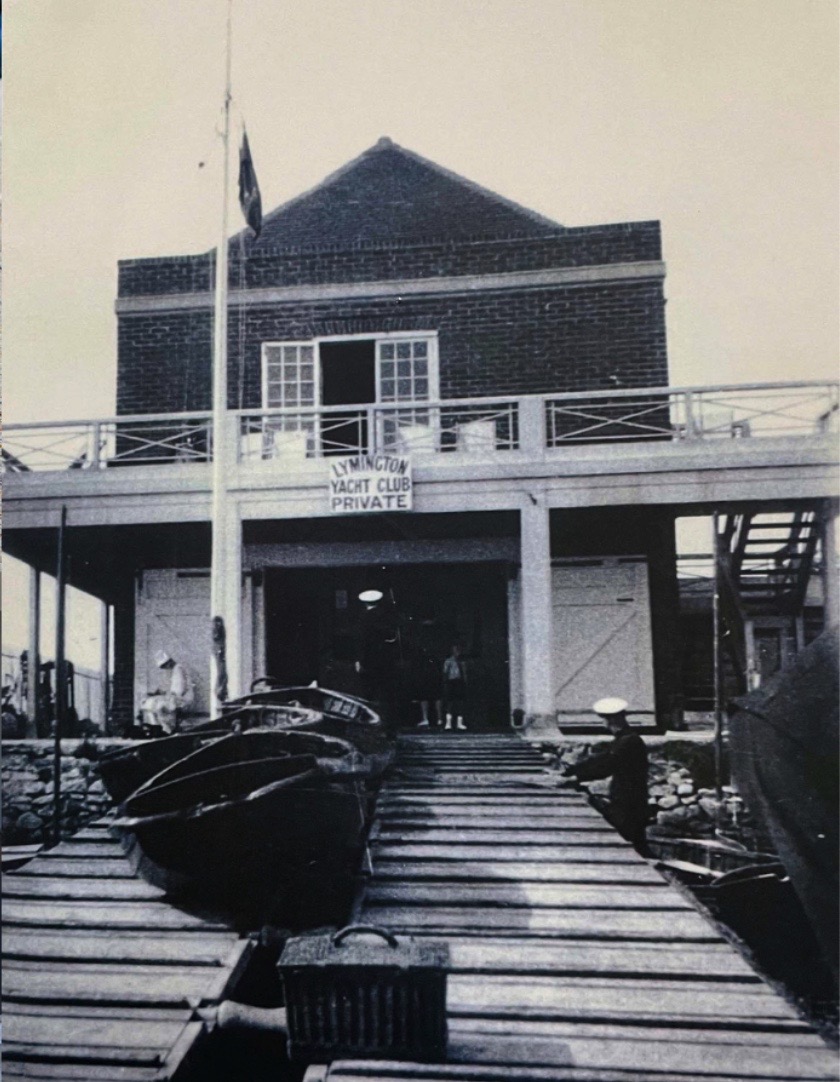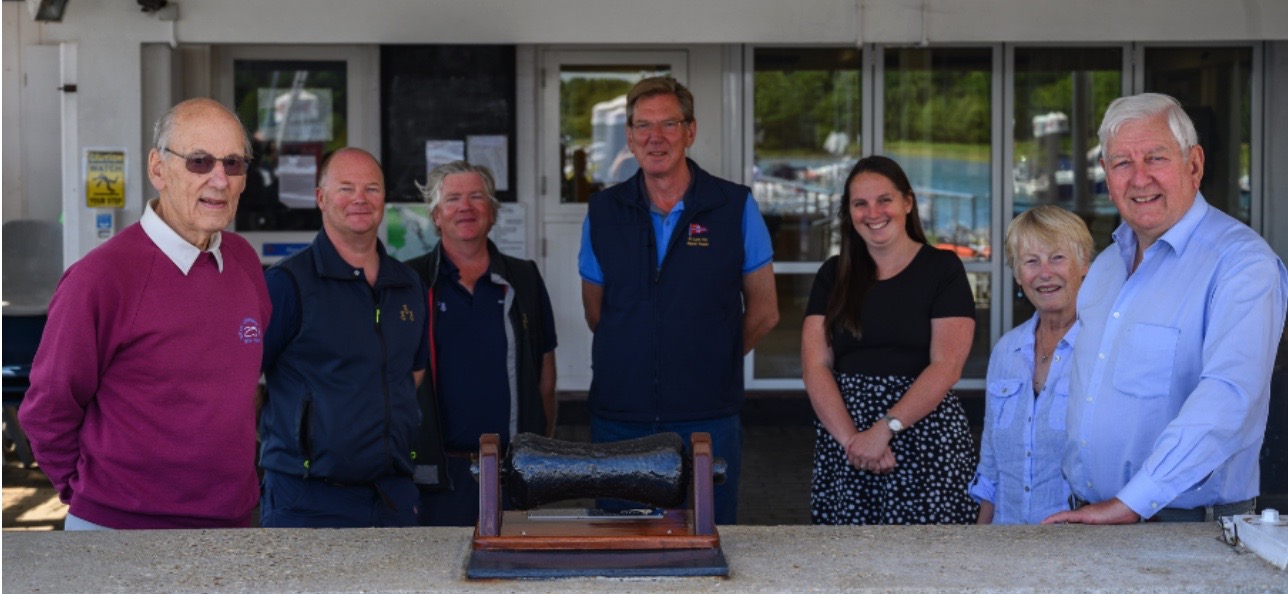Centenary
The Club was officially formed in 1922, but has its origins in the Lymington River Sailing Club established in 1914 but suspended during the Great War. There are traces of even earlier clubs on the Lymington River, but no documentation.
More Club History emerges during Centenary Year

Unveiling our old Slipway Roller
Friday 1st July saw the unveiling of a rather unusual piece of the Club’s past – the carefully renovated and beautifully mounted remnant of the old slipway – one of the keel rollers. This 30kg mass of cast iron dated back to the very origins of the old Coast Guard Boathouse, in the 1800s. Along with a number of other such rollers, it served to ease the recovery of boats up the slipway and into the boat house – the structure that was the basis of our Clubhouse, when acquired at the instigation of Major Cyril Potter in 1923.
The boathouse was a single storey, brick structure; fitted with two large doors (that existed, though not used until relatively recently), from which the timber slipway went forth. The accompanying picture from 1926, clearly shows one of the rollers, in Club use – next to what appears to be a picnic hamper.
In 1950, the slipway was removed – it having been a constant complaint of the boatman who had to scrub mud and weed from its surface, at every tide. It was replaced by a fixed landing stage that projected some way into the river, where it ended with a hammerhead in deep water.
The walkway boasted enough width to allow dinghy trolleys to be taken along to the inner face of the hammerhead, where a launching ramp was provided; keel boats would moor in the stream, duly allowing for the rise and fall. As part of the replacement, to provide much improved alongside facilities – it was even fitted with a dinghy on davits – a number of rollers were recovered, one of which survived over 70 years, in the wondrous depths of the Boatmen’s workshop.

Scroll forward to Centenary Year, when thoughts and minds turned to memorabilia and memories of the past, and the roller came to light with the thought that it warranted preservation and some form of display. Step forward former Club Secretary and Honorary Member, Jonathan Hutchinson, whose woodworking skills are legendary, as any who have admired his marquetry in the table next to the new lift, will testify.
Joff took to the task with a will and located some fine specimens of seasoned timber, including recycling the old tabletop, to create a robust and durable base, with supporters to hold the considerable weight of the roller, which also received a thorough renovation in the process.

The ensemble then received numerous coats of varnish and was graced with a commemorative plaque, explaining its provenance to future generations. The Boatmen then undertook the final resting place of their charge of nearly three-quarters of a Century, by bolting it to the seawall, where it will remain under their watchful eye.

Jonathan Hutchinson, Phil Baker, Iain Marshall, Stephen Crates, Kirsty Husband, Jane Clarke, Graham Clarke
Also present, were Graham Clarke, Hon Historian, and Jane, together with boatmen Phil Baker and Iain Marshall, all under the careful supervision of Kirsty Husband, General Manager Operations. As is so often the case, behind the camera was Paul French, who is thanked for the photos of the occasion.
Graham Clarke
Club Historian
The ensemble then received numerous coats of varnish and was graced with a commemorative plaque, explaining its provenance to future generations. The Boatmen then undertook the final resting place of their charge of nearly three-quarters of a Century, by bolting it to the seawall, where it will remain under their watchful eye.
To mark the occasion and to pay tribute to Joff’s handiwork, the Roller was given due ceremony and unveiled by Stephen Crates, Vice-Commodore, reflecting its part in the Centenary Year.


